The Crucial Role of Transition Strips in Floor Renovation
During floor renovation projects people tend to concentrate on selecting suitable flooring materials between hardwood, tile, laminate and carpet while designing the entire space. The transition strip stands as an essential yet tiny element which people commonly overlook. Transition strips function as the "invisible guardian" of floor renovation to provide safety and durability alongside aesthetic harmony. The article discusses transition strip necessity and their operational advantages and correct installation procedures for complete flooring success.
What Are Transition Strips?
The purpose of transition strips or T-strips or threshold strips or seam binders is to join different flooring materials or connect floors at different elevations. These strips serve to connect hardwood living room floors with tile kitchen floors and also join carpeted hallways to laminated floor sections. The smooth passage between flooring types that transition strips create helps prevent tripping risks while delivering a professional-looking finish.
The different materials used for transition strips include metal (stainless steel or aluminum) and wood and PVC and they come in various styles that match specific requirements such as flat strips for even floors or reducer strips for uneven floors. The adaptability of transition strips makes them applicable for different environments including between rooms and at stairs and where flooring materials shift between porcelain tiles and wooden planks.
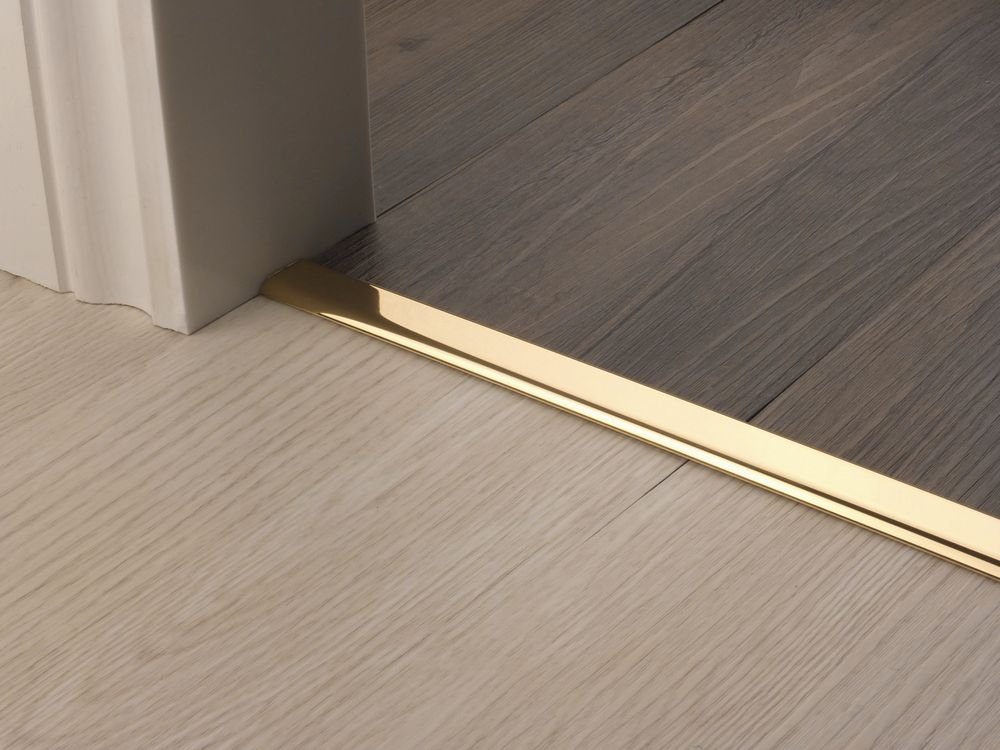
Feature | Description |
Purpose | Connects different flooring types or heights, ensuring a smooth transition. |
Common Materials | Metal (stainless steel, aluminum), wood, PVC. |
Applications | Room transitions, stair edges, material changes (e.g., tile to hardwood). |
Styles | Flat strips, reducer strips, threshold strips, T-molding, seam binders. |
Why Transition Strips Are Essential for Floor Renovation
Transition strips serve multiple vital functions beyond their aesthetic value in flooring projects. Here are the key reasons they are indispensable:
1. Enhancing Safety
The transition between flooring materials at different heights such as hardwood to tile steps creates potential tripping risks. The situation becomes most dangerous when children or senior citizens inhabit the home. Transition strips eliminate uneven flooring levels to create a flat surface which ensures users can move between rooms safely. The installation of suitable transitions according to flooring experts leads to major accident prevention in areas with heavy foot traffic.
2. Protecting Flooring Edges
The unprotected edges of flooring materials become vulnerable to wear and tear as well as chipping and moisture damage when located in high-traffic areas or humid spaces including kitchens and bathrooms. Transition strips function as protective elements that safeguard vulnerable edges while they also help extend the life expectancy of your flooring materials. A metal strip functions as a protective element that stops wooden floor edges from deteriorating when they encounter tiled surfaces.
3. Covering Expansion Gaps
Wood along with laminate and SPC flooring need expansion gaps because these materials expand and contract based on temperature and humidity changes. Transition strips function as protective barriers which prevent these gaps from accumulating dirt, dust or debris that can damage the flooring materials in the long run. The protective function of transition strips maintains both cleanliness and visual appeal by covering expansion gaps while keeping flooring materials intact.
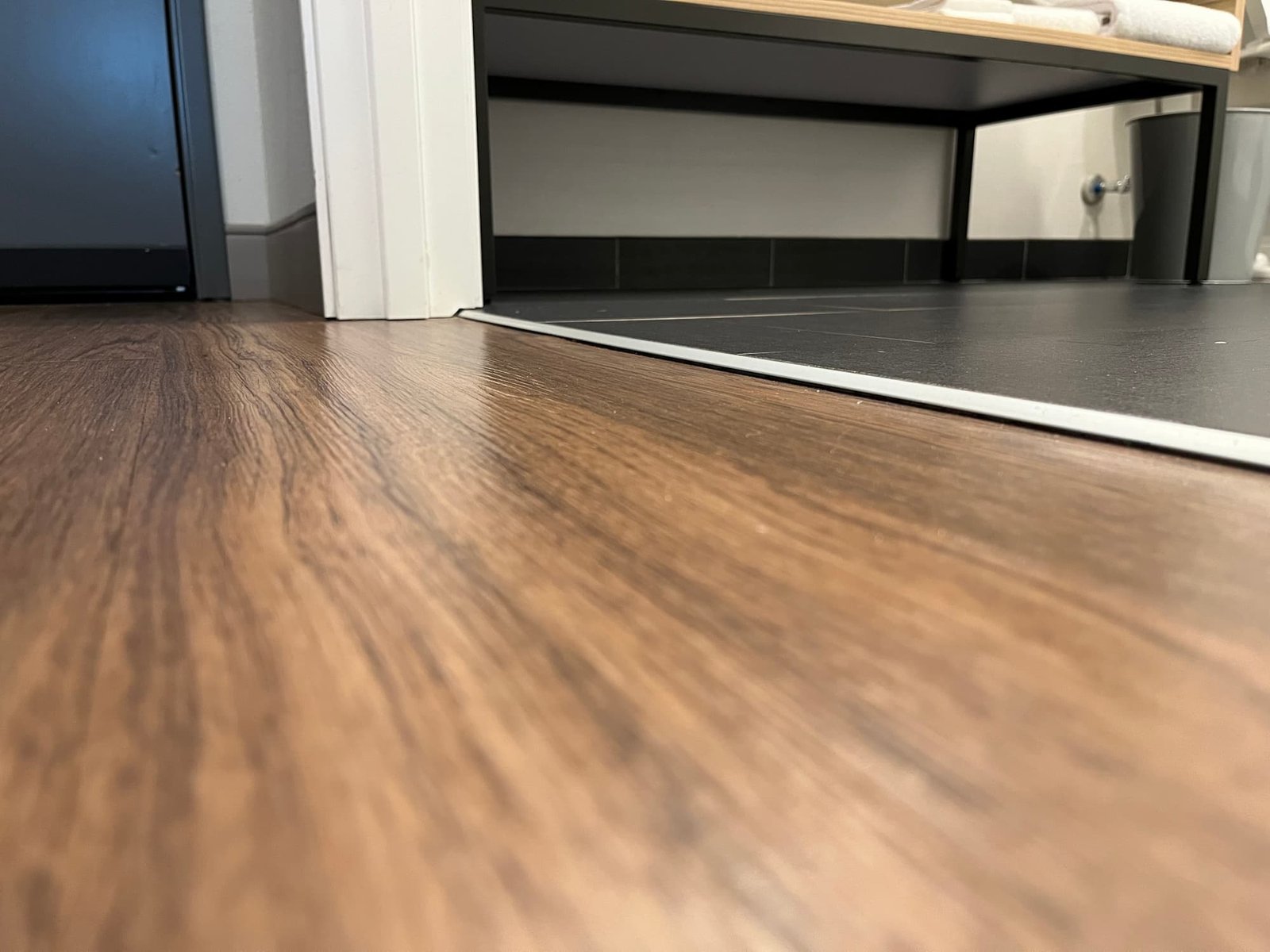
Extended Functional Benefits of Transition Strips
The fundamental purposes of transition strips extend into various additional benefits which improve the operational value and visual appeal of your space.
Preventing Dust and Debris Accumulation
The joints between different flooring materials remain secure through transition strips which prevent both dust and dirt and liquids from entering underneath. The benefits of transition strips are most noticeable in areas where many people walk by or in homes with animals because they help keep the space clean. Proper installation of transition strips helps you maintain hygienic floors which are also simple to clean.
Visual Zoning and Design Enhancement
Transition strips function as design elements to separate different spaces in open-plan layouts such as the transition between dining and living areas. Your selection of transition strips either matching or contrasting with your floor materials enables you to create a design element that improves your home's overall appearance. A modern appearance emerges from using sleek aluminum strips yet wooden strips match perfectly with hardwood floors.
Choosing and Installing Transition Strips
The proper selection of transition strips combined with proper installation methods determines the final results. This information will help you choose the right transition strip for your needs:
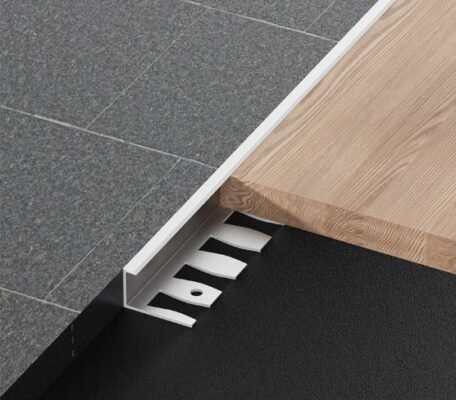
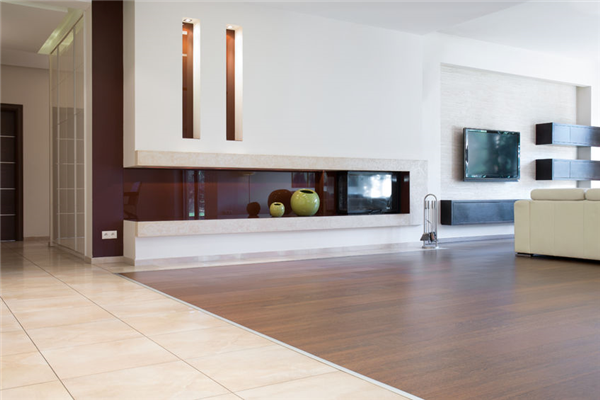
Matching Height Differences
Transition strips must match the height difference between flooring materials. T-molding and flat strips work well for floors that have equivalent heights. Large height variations between floors require either reducer strips or ramped threshold strips for effective flooring solutions. Measuring the height gap accurately ensures a seamless and safe transition.
|
Strip Type |
Best Use Case |
Example Scenario |
|---|---|---|
|
T-Molding |
Connects floors of similar height |
Hardwood to hardwood in adjacent rooms |
|
Reducer Strip |
Bridges floors with height differences |
Tile to lower laminate flooring |
|
Threshold Strip |
Transitions at doorways or stair edges |
Carpet to tile at a bathroom entrance |
|
Seam Binder |
Covers gaps between same-height floors |
Hardwood to hardwood with expansion gap |
Coordinating Material and Color
The transition strip must have a material and color that matches your flooring to achieve a unified appearance. Metal transition strips which come in stainless steel and aluminum deliver both strength and contemporary design appeal when used with hardwood flooring. The versatility of PVC strips makes them affordable while offering multiple color options to blend with flooring or create contrast. The choice of a strip which matches your design concept will create an attractive visual outcome.
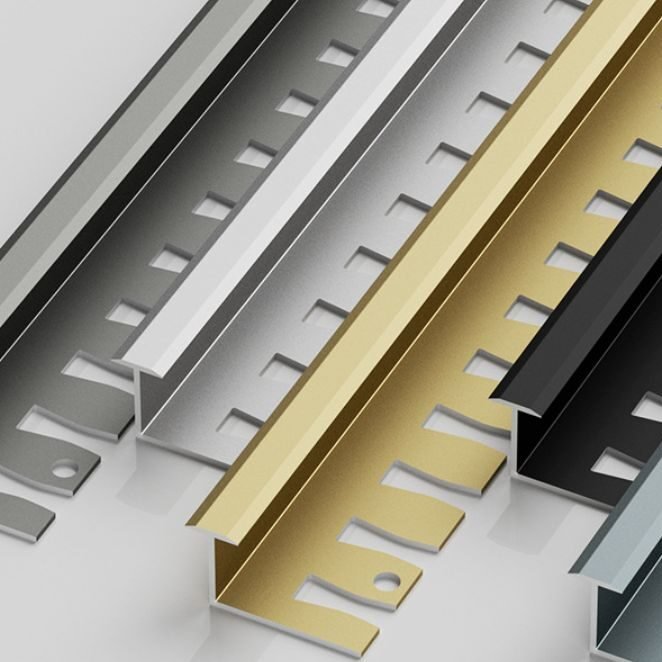
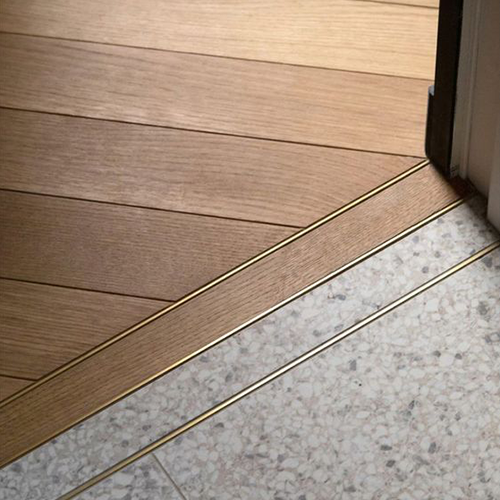
Prioritizing Quality
High-quality transition strips have both durability and resistance to deformation as well as environmental sustainability. Heavy-traffic areas benefit from stainless steel or aluminum transition strips because they maintain their condition effectively under heavy use. The combination of sustainability in wood sourcing with recyclable PVC materials meets modern environmental regulations while delivering long-term durability.
Installation Best Practices
The proper installation of transition strips leads to the highest possible advantages they can provide. Always follow the manufacturer instructions precisely when installing the strip since improper fastening methods can lead to strip loosening in the future. For complicated installations that require working with uneven subfloors or concrete surfaces it is advisable to hire a professional installer. A precise fit becomes possible with this method which prevents buckling and gaps from occurring.
Conclusion: The Indispensable Finishing Touch
Transition strips represent a fundamental element that makes floor renovation projects successful even though they appear insignificant at first glance. Transition strips promote safety by removing trip risks while protecting floor edges from harm and hiding expansion joints for a neat finish while delivering additional advantages such as cleanliness and visual separation. The selection of high-quality transition strips should be your top priority for every flooring project you undertake because they create safe durable results with excellent aesthetics.
Our Products
Latest Articles
Get A Free Sample
Try out the products you are interested in and get free samples. See the quality for yourself and let’s start working together right away.
Get In Touch Today
After you fill out the form, We will contact you within 24 hours.
The first objective will be to understand your needs, then develop a business plan together and provide you with the best pricing!
Address
Workshop No. 3 (Self - designated), Sizhong Industrial Zone, Dazhen Community, Dali Town, Nanhai District, Foshan City
Tel
+86 13392243769
+86 13392243769
senmry@vip.163.com







